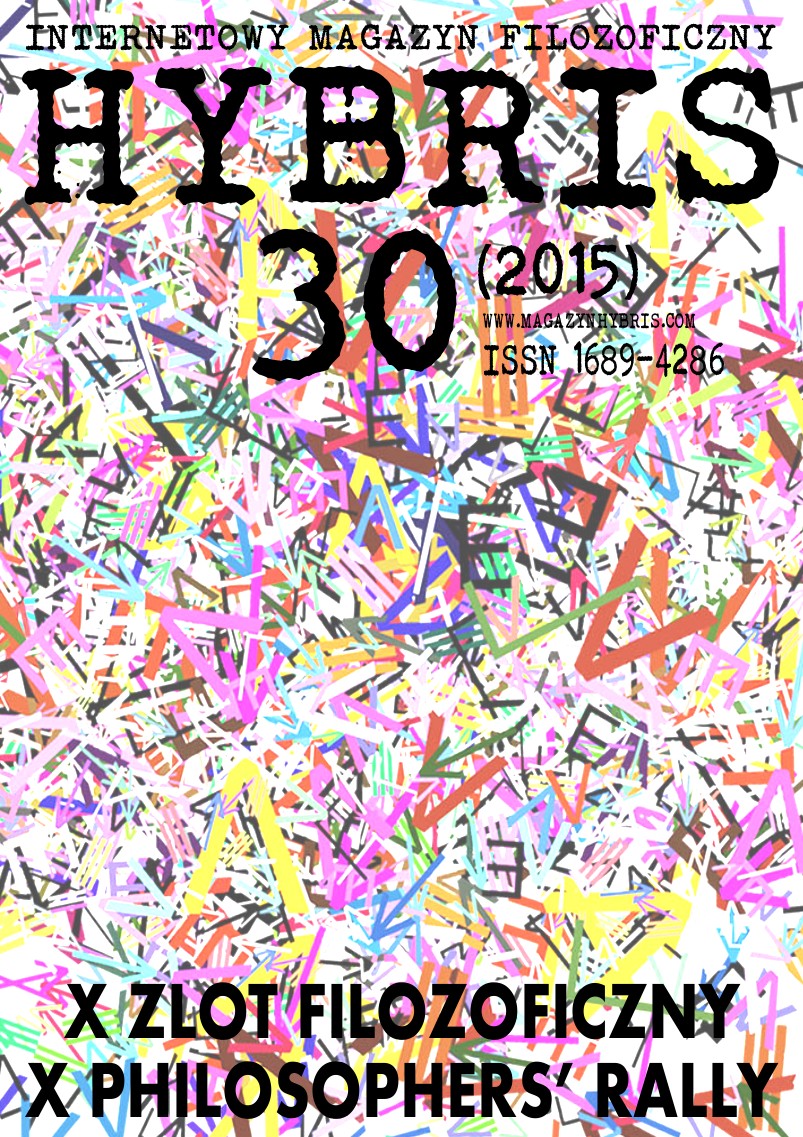Uwięzieni w maszynie. Technoantropologia
DOI:
https://doi.org/10.18778/1689-4286.30.06Słowa kluczowe:
robot, technology, biohacking, Internet, techno-anthropology, transhumanism, technological development, collective knowledgeAbstrakt
The aim of this article is to pose the question of who is the man in a world steeped in technology. Currently, through the significant growth of the Internet, we are in the middle of the road leading to the connection of all people in the world in one nervous system. Machines are the most important teachers of man. Not only in terms of learning specific things, but also in the sense that the role of the teacher described by Max Weber — in communicating our knowledge about how to be a man. With some caution we can say that the machines define human form of contact with other people. In conclusion, the author of the article considers the question of human nature in the light of such phenomena as the collective consciousness in the network, technological development and biohacking. The author introduces the concept of „machines” meaning the virtual body, computers, credit cards, terminals, camera, internet, networks, software, satellite and fiber optics. These are all elements merged in the „machine” that creates human behavior.
Bibliografia
Boellstroff, Tom, 2012, Dojrzewanie w Second Lifie. Antropologia człowieka wirtualnego, przeł. Agata Sadza, Kraków: WUJ.
Zobacz w Google Scholar
Collins, Harry, Pinch, Trevor, 1998, Golem. Czyli co trzeba wiedzieć o nauce, przeł. Anna Tanalska-Dulęba, Warszawa: CiS.
Zobacz w Google Scholar
Garreau, Joel, 2005, Radykalna Rewolucja, przeł. Agnieszka Kloch, Aleksander Michalski, Warszawa: Prószyński i S-ka.
Zobacz w Google Scholar
Jordan, Tom, 2011, Hakerstwo, przeł. Tomasz Płudowski, Warszawa: PWN.
Zobacz w Google Scholar
Lévy, Pierre, 1997, Collective Intelligence: Mankind’s Emerging World in Cyberspace, Cambridge: Perseus-Books.
Zobacz w Google Scholar
Postman, Neil, 2004, Technopol. Triumf techniki nad kulturą, przeł. Anna Tanalska-Dulęba, Warszawa: MUZA.
Zobacz w Google Scholar
Turney, Jon, 2001, Ślady Frankensteina, przeł. Marta Wiśniewska, Warszawa: PIW.
Zobacz w Google Scholar
Żylińska, Joanna, 2012, W laboratorium etyki. Odpowiedzialność za życie, [w:] Ryszard, Kluszczyński (red.), Crude life. The Tissue Culture & Art. Project. Oron Catts & Iont Zurr, Gdańsk: Centrum Sztuki Współczesnej Łaźnia, ss. 16–33.
Zobacz w Google Scholar
Pobrania
Opublikowane
Jak cytować
Numer
Dział
Licencja

Utwór dostępny jest na licencji Creative Commons Uznanie autorstwa – Użycie niekomercyjne – Bez utworów zależnych 4.0 Międzynarodowe.






